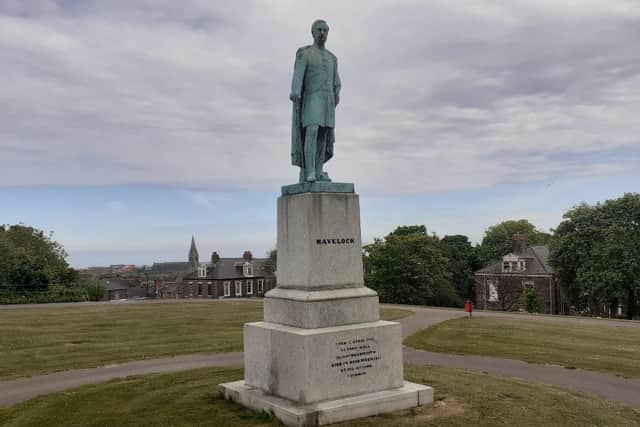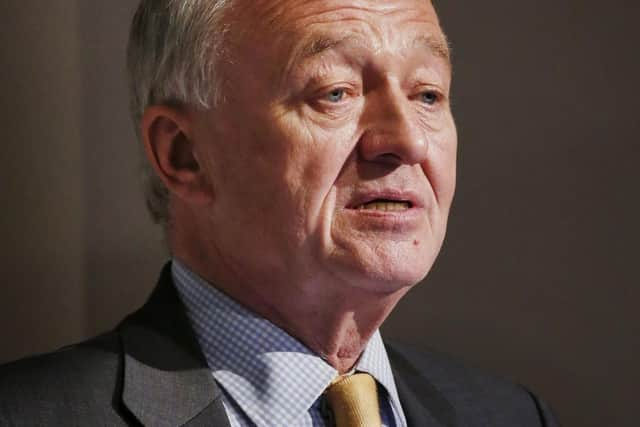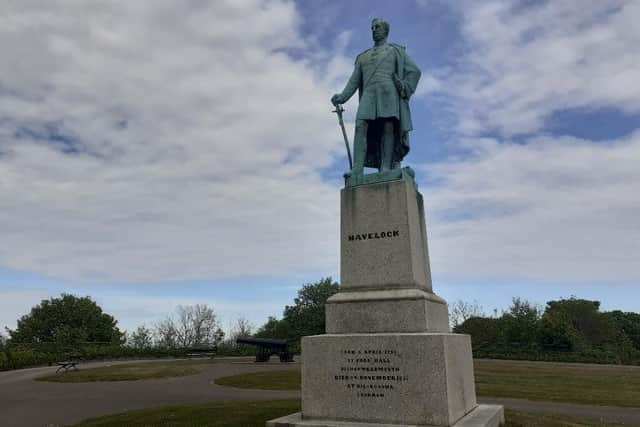Who is Henry Havelock? The story of the Mackem who has a statue in Trafalgar Square
and live on Freeview channel 276
Many people from Sunderland would be left scratching their heads if they were asked who Henry Havelock is, even though a copy of his Trafalgar Square statue stands in Mowbray Park and there are several pubs named after him.
When Ken Livingstone was Mayor of London, he got shirty because he didn’t who General Havelock was and thought the statue should be replaced with someone people actually learn about in history lessons.
Advertisement
Hide AdAdvertisement
Hide AdKen reckoned: “I think that the people on the plinths in the main square in our capital city should be identifiable to the generality of the population. I have not a clue who two of the generals there are, or what they did.”


So who was Major General Sir Henry Havelock?
When the London statue was unveiled in 1861, it wasn’t an honour given to any old body, and Havelock was renowned at the time.
Havelock was born the second of four brothers in Bishopwearmouth on April 5, 1795, roughly where Fordfield Road now meets Front Road in Ford Estate, not far from where Havelock Court and General Havelock Road were later built.
In fact his birth was in Ford Hall, a huge pile owned by his shipbuilding father, the loaded William Havelock so he was born into considerable wealth and privilege.


Advertisement
Hide AdAdvertisement
Hide AdAged around nine he was sent to Charterhouse, an extremely posh public school in Surrey. This was unavoidable as the nearby Pennywell Comprehensive would not be built until 1967.
Aged 20 he was forced to abandon a law career and join the army and he became a second lieutenant in the Rifle Brigade before rising through almost every rank up to two-star general.
By the time he set sail for India aged 27, he had read voraciously on military history and the theory of war. It was his specialised subject as well as his job, and no one could top Henry in the pub quiz on the war round.
He also became very religious when leading troops he ensured that each of his men were equipped with a bible in combat zones, which must have been very useful.


Man of action rises to the top
Advertisement
Hide AdAdvertisement
Hide AdHavelock, like many soldiers, he craved action. He saw plenty too, fighting in the horrible First Anglo-Burmese War (1824-26), a British victory, but with heavy losses on both sides.
By the time the first Anglo-Afghan War came in 1839, Havelock had risen to captain. Again, he showed his worth during a British victory at the Battle of Ghazni, although the war was ultimately won by the Afghans.
He wasn’t just ordering his troops into battle then gathering plaudits. The Wearsider was renowned for his immense physical courage.
He earned further distinction during the Sikh War of 1845-46 in several major battles. In his spare time he produced detailed reports on the action, which were sent back to Britain to become newspaper reports.
Advertisement
Hide AdAdvertisement
Hide AdAfter a couple of years back in England, he returned to India in 1852. Two years later he was made Adjutant-General. The gaffer. Answerable only to the Chief-of-Staff and Queen Victoria herself.
But Henry Havelock is best remembered for his role in what is known, although not without forceful dispute, as the Indian Mutiny. In short, many Indians had had enough of the Brits.
Death and glory
In 1857, then aged 62, he was called upon to “disperse and utterly destroy all mutineers and insurgents” in what is now Uttar Pradesh. Not language we would use today.
Havelock led his 1,940 men, in three victories, as the army fought their way through all the rebel forces in their path, while greatly outnumbered.
Advertisement
Hide AdAdvertisement
Hide AdAll that swotting up on military theory had served him well.
But Havelock was to die at the famous Siege of Lucknow where around 1,700 British and Indian troops had fortified themselves in the British residency against 60,000 rebels outside.
After rebels advanced on the city of Lucknow Henry and his lads marched 126 miles in searing heat, and ended the siege with a timely evacuation.
Despite this success Havelock died on November 24, 1857. Unfortunately it wasn’t direct combat which gave him a glorious end, like Nelson or General Gordon. It was dysentery, a respecter of neither bowel nor rank.
Havelock’s statue in Trafalgar Square
Advertisement
Hide AdAdvertisement
Hide AdIt should perhaps also be noted that someone born into a family like the Havelocks, could easily have pursued a career that would almost certainly have given him a longer and more comfortable life - such as politics. Indeed, Henry’s own son became MP for Sunderland in 1874.
The statue is notable in itself as it is the first statue ever created from a photograph.
He is joined on the other plinths by fellow army bloke, General Sir Charles James Napier and King George IV, best remembered as a wastrel and glutton whose main achievement in life was not dying before his father, thereby becoming king.